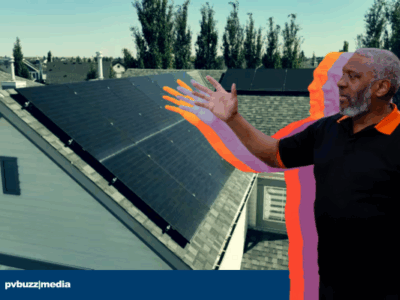Unsurprisingly, the monumental rise in solar installations in the US over the past decade has been driven by the ever-increasing economic case for the technology.
For the most part, solar developers are focused on trying to come in below a customer’s energy rate, which makes sense, but in an environment with fewer incentives and depressed energy prices, we should get better at being able to sell demand savings and include them in the upfront economic analysis as opposed to a “nice to have” as they have historically been presented.
Demand Charges on the Rise
Demand charges, which account for peak electricity use during the month, are needed because it is expensive for the utility to build and maintain the ability to serve their territory’s highest demand during a monthly basis, even though that peak demand may only occur once. For commercial and industrial customers, however, demand charges are substantial, typically comprising between 30 and 70 percent of their monthly electricity bill (this varies dramatically by region).
The actual demand charge rate is increasing across the US while energy prices are decreasing, leading the industry to expect demand charges to make up an even higher percentage of a customer’s electricity payments in coming years.
How Much Can Solar Help?
Monthly utility bills will determine how much and when the peak demand typically occurs and how the charges are calculated. Electricity bills may have more elements, including a time of use component and even multiple demand charges with one specifically for peak periods, and that can make the timing of higher electrical demand even more important, and a review of the bill will reveal that.
If a customer’s peak demand is during a time when solar electricity is projected to be produced then the customer will see a reduction in the total peak demand instances – they can draw electricity from their solar project and thus do not need to demand those electrons from the utility. By taking the capacity of the system and its production during the peak demand period, you can essentially calculate the delta between the current peak demand, in kW, and the projected peak demand, in kW, after accounting for the solar system (The peak is usually at the same time but keep in mind using solar may also update when your peak demand occurs).
Once this capacity reduction amount is multiplied by the demand changes ($12/kW for example), you can project that month’ by solar energy.
Solar Production Curves
In terms of solar production matching up with peak demand, solar is typically an ideal resource because it produces electricity during the day when businesses are running, students are attending class, etc. In general, the peak customer demand for utilities is in the late afternoon, especially during the summer.
Furthermore, we have seen several opportunities, particularly with municipal utilities, where being able to use single-axis trackers has extended a solar project’s maximum production to better overlap with the municipalities’ peak demand – typically this has been in the early evening, but sometimes the morning in areas with large agriculture or industrial demand.
Level of Certainty
This is all encouraging and clearly a key benefit of solar energy, but there is a degree of uncertainty. Annual solar insolation data and system production projections have been impressively accurate, and we generally can estimate how much sunlight will hit a given area of the earth during the year.
However, nobody can accurately estimate a customer’s expected demand savings because it is difficult to predict micro-weather events (which can reduce a solar system’s production during a monthly peak demand occurrence). For example, we cannot as confidently guarantee that there will not be a thunderstorm the one afternoon that occurs during a customer’s peak demand.
We always want to be upfront about this so as not to overpromise demand savings, but customers should not overly discount the economic benefit either. Depending on where your system is located, we can run a probabilistic analysis that provides a reasonable range of savings with a higher degree of confidence and sophistication. This projected range of demand savings may be enough to make the project a smart investment even if there is little to no savings on the energy rate, and increasingly we are seeing customers making a decision based on this.
Battery Potential
By installing a battery to go along with the solar system, customers can use stored electricity to reduce peak demand in instances when there is little solar insolation during a peak demand event. The battery can essentially guard against the randomness of a thunderstorm occurring during the customer’s peak demand.
At the same time, a battery adds to the costs of the system, and so the analysis usually becomes – how confident are you in some level of demand savings without the battery, and what are your demand charges ($/kW). There are certainly other variables, but we are generally seeing that if a customer has demand charges of $15/kW or higher than batteries can be a favorable economic proposition.
This is an exciting development as the industry has been waiting for more explicit markets and signals for when batteries make sense.













Comments